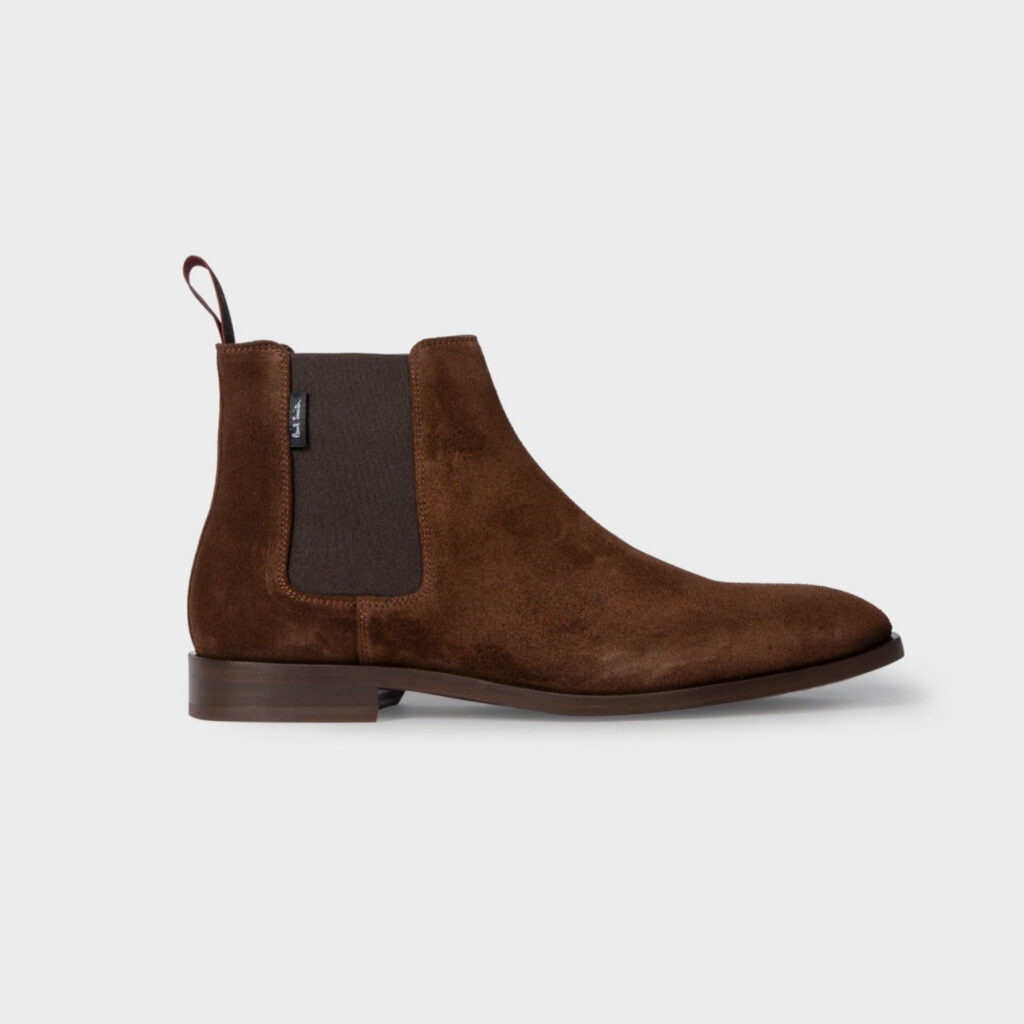Whether you are considering getting into the world of watch collecting, or just want to pick up a watch to use day to day, there are a few things that are important to know before making that first purchase.
With an abundance of information available on the internet, it’s easy to get lost in the weeds. That’s why we’ve put together this guide – to provide you with the essential knowledge you need to make informed decisions when it comes to buying your first watch.
In this article, we’ll cover:
- Mechanical vs. Quartz Watches
- The Main Watch Brands and their Sub-brands
- How a Watch Should Fit
- Strap Types & Watch Tools You Need
- In-House vs. Third Party Movements
- Water Resistence Basics
- Where To Buy a Watch
MECHANICAL VS. QUARTZ WATCHES
When it comes to buying a watch, understanding the different types of movements is essential. A movement refers to the internal mechanism that powers the watch and makes it tick. The two main types of watch movements are mechanical and quartz.
Mechanical movements are powered by a complex system of gears and springs, which are wound up either manually or automatically. Manual or hand-wound watches require the wearer to manually wind the watch to keep it going, while automatic watches use the motion of the wearer’s wrist to automatically wind the watch. Mechanical watches are often handcrafted and are considered more of a romantic idea. They are also more collectible due to their intricate design and craftsmanship. One disadvantage of mechanical watches is that they have a limited power reserve and need to be wound or worn regularly to keep them running.
On the other hand, quartz movements use a battery to power the watch. They are more accurate and easier to produce than mechanical movements. Quartz watches are also generally less expensive than their mechanical counterparts. However, one downside of quartz watches is that they require a battery, which will eventually need to be replaced.
Ultimately, the choice between mechanical and quartz movements comes down to personal preference. While mechanical watches are often viewed as more traditional and desirable, quartz watches are more accurate and low maintenance. Understanding the pros and cons of each type of movement can help you make an informed decision when choosing a watch.
WHICH WATCH BRANDS ARE THE BEST?
Every watch brand has its own personality, style, and heritage, and in the world of horology, there are several big players, each with its own sub-brands that cater to different tastes and budgets. Here we’ve attempted a brief overview to get you up to speed with the main brands.
- The Swatch Group is one of the largest watch conglomerates globally and houses a wide range of renowned brands such as Omega, Rado, Tissot, Longines, Hamilton, and Swatch. From classic elegance to contemporary cool, the Swatch Group has a timepiece for every occasion and personality.
- The Richemont Group is another heavyweight in the industry, boasting a portfolio of luxurious brands such as Cartier, IWC, Piaget, Panerai, and A Lange & Sohne. These brands specialize in high-end watches with intricate designs and exclusive materials, making them the choice of the elite.
- The Seiko Group is a Japanese watch company that includes Seiko, Orient, Credor, and Grand Seiko. Seiko is known for its premium quality quartz and automatic watches, while Grand Seiko is a testament to exceptional craftsmanship and attention to detail.
- The Citizen Group comprises Citizen, Bulova, and Alpina, each providing a range of stylish and affordable watches. Citizen stands out with its Eco-Drive technology, which harnesses solar power to keep the watch ticking.
- Rolex and Tudor are privately owned watch brands that share a reputation for durability and high-quality timepieces. Rolex’s Submariner and Daytona models are iconic, while Tudor offers a more budget-friendly alternatives and several iconic pieces in their own right, namely the Black Bay and Pelagos lines.
- LVMH Group is a luxury fashion conglomerate, which owns a few top-tier watch brands such as Tag Heuer, Zenith, Hublot, and Bvlgari.
- Kering Group is another group that owns fashion brands like Saint Laurent, Gucci and Balenciaga – also under their umbrella are a few luxury watch brands, including Ulysse Nardin and GP (Gerard-Perregaux), both known for innovative designs and exceptional craftsmanship.
- Independent watch brands such as Patek Philippe, Audemars Piguet, Breitling, and Nomos, are some other major players that each boast its own unique style, heritage and artistry.
HOW A WATCH SHOULD FIT
Finding a watch that fits perfectly on your wrist is essential for both style and comfort. But how do you ensure that your new timepiece will feel just right?
First and foremost, know the circumference of your wrist. Measuring your wrist with a tape measure or a piece of string will help you determine the appropriate size for your watch.
Once you know your wrist size, there are three essential things to consider when selecting a watch: case diameter, thickness, and lug-to-lug. The case diameter is a critical factor that can affect how a watch wears. However the overall look and construction of the watch can effect the perception of how big the watch looks on the wrist. For example, a watch that is all dial with just a thin bezel may appear bigger than one with a larger bezel and smaller dial, so be sure to try on different styles to see how they suit you.
The thickness of a watch can also impact how it wears on your wrist. A thicker watch may feel heavy or bulky, while a thinner one may feel too delicate. Again, trying on different watches will give you a better idea of what feels comfortable.
Finally, the lug-to-lug measurement is the distance between the two lugs that hold the watch strap or bracelet. This measurement can significantly impact the overall look and feel of a watch.
Ultimately, the best way to ensure a watch fits comfortably and looks good is to try on different watches. Take note of the case diameter, thickness, and lug-to-lug measurement and see how they impact the overall fit and feel. With a little trial and error, you’ll find the perfect watch that fits like a glove.
STRAP TYPES & ESSENTIAL WATCH TOOLS
When it comes to watches, many people don’t realize that changing the strap can be a game-changer for the overall look and feel of the timepiece. Switching out the strap is an easy way to add some personality and versatility to your watch collection.
To start, it’s important to understand the lug width, which is the distance between the lugs that hold the strap or bracelet in place. Knowing the lug width is essential when selecting a new strap, as the strap must match the width of the lugs.
There are several types of watch straps to choose from, including leather, metal, and NATO. Leather straps are perfect for dressier occasions, while metal straps are more sporty and durable. NATO straps are a more casual option and can add a pop of color or pattern to your watch.
To switch out a strap, you’ll need a spring bar tool, which is used to remove the strap and adjust the bracelet or lugs. It’s a simple tool that makes changing the strap a breeze.
If you’re interested in experimenting with different watch straps, consider investing in a spring bar tool and a few different straps to start. You may be surprised at how much of a difference a new strap can make in transforming the look and feel of your watch.
WHAT ARE IN-HOUSE & THIRD PARTY WATCH MOVEMENTS?
As you first get into watches, you might start hearing terms like “in-house” and “third party” movements, and understandably you may be a little confused. These are just a few terms you need to get familiar with before you really start to feel like an insider in the world of watches.
First of all, third-party movements are created by companies like ETA and Miyota, and are generally more affordable and widely available than in-house movements. Because they are produced in large quantities, parts are easier to source and service. However, there are varying levels of quality among third-party movements, with some being more precise and dependable than others.
In-house movements, on the other hand, are created within the watchmaker’s own facilities. This adds a certain level of exclusivity and collectability to the watch, as it is a unique and specially crafted piece. However, in-house movements can come with a higher price tag, and just because a movement is in-house does not necessarily mean it performs better than a high-quality third-party movement.
When it comes to certifications, the most widely recognized is the COSC (Contrôle Officiel Suisse des Chronomètres), which tests watch calibers through a variety of tests to achieve chronometer certification. This adds an extra level of respect and assurance to the watch, as it shows that it has undergone rigorous testing and meets certain standards. However, some watchmakers have internal testing standards that are even higher than COSC, and they do not send their watches in for certification as a result.
When deciding on a watch movement, it’s important to consider your personal preferences and budget. Third-party movements offer a reliable and cost-effective option, while in-house movements add a certain level of exclusivity and collectability. Ultimately, choose a watch you love and one that makes sense for your lifestyle and budget.
WATER RESISTANCE
Understanding water resistance in watches can be a confusing and often misleading concept. For instance, a watch that claims to be water-resistant up to 30 meters does not necessarily mean you can wear it for all activities in water up to that depth.
Watch manufacturers often use water resistance ratings to indicate how much water pressure a watch can withstand. The most common ratings are 30 meters (3 bar/3 ATM), 50 meters (5 bar/5 ATM), 100 meters (10 bar/10 ATM), and 200 meters (20 bar/20 ATM). However, each rating is only suitable for certain activities.
A watch rated for 30 meters is only splash-resistant and should not be worn while swimming. A watch rated for 50 meters is suitable for light swimming, but not diving. A watch rated for 100 meters is suitable for most water activities, including swimming and snorkeling, but not diving. A watch rated for 200 meters is suitable for water activities, including diving.
It’s important to note that the water resistance rating alone does not determine a watch’s ability to withstand water. Other factors, such as the watch’s build quality, including rubber seals, the number of holes in the watch, and a screw-down crown can also impact water resistance. Additionally, for serious dive watches, there are specific certifications that ensure they can withstand the pressure and conditions of diving.
WHERE TO BUY A WATCH
There are different ways to purchase a watch, but it’s essential to know where to buy to ensure that you get a genuine timepiece that meets your needs. Really, there are three main places you would buy a the type of timepieces we’re discussing in this article: The “Black Market”, The “Gray Market”, Pre-Owned Outlets, or an Authorized Dealer.
The black market is not recommended, as it is illegal and can result in the purchase of fake watches. Grey market dealers are non-authorized by the brands and may offer lower prices, but they may not have stock readily available and may not offer a warranty.
Pre-owned watches are a great way to go if you’re looking for a good deal. You can often find a good, honest seller with a track record of selling authentic watches. Many local Authorized Dealers carry pre-owned watches, and you can also purchase online through an auction site or a reselling site specific to watches. A site like eBay would be the least recommended place to buy a luxury watch – with the risk of fake or non-functioning pieces, whereas a more vetted watch-specific site like Chrono24, or Hodinkee may be a little safer. Regardless of where you buy a pre-owned watch, you should definitely do your own research and ask for certification to ensure that the watch is genuine.
Authorized Dealers (or “A.D.”s as they’re called in the watch community) are the best option for buying watches, as they are authorized by the brand and usually offer better customer service and factory warranties. While they may have slightly higher prices than grey market dealers, you can be confident that you’re buying a genuine watch and can rely on the after-sales service provided by the dealer. Your local authorized dealer will usually be a jewelry store, that will often sell a variety of jewelry in addition to watches. Building a relationship with a local A.D. is important if you are getting serious about watch collecting, as many pieces can be limited and hard to get, and certain watches actual sell for more on the secondary market.
Lastly, some brands like Nomos or Junghans sell their watches direct-to-consumer, in addition to having authorized dealers, and these watches can be purchases directly from their website. When making a purchase directly from a brand’s website, keep in mind the country it is shipping from as their may be shipping and duties charges which may significantly add to the total cost of your new timepiece.









































